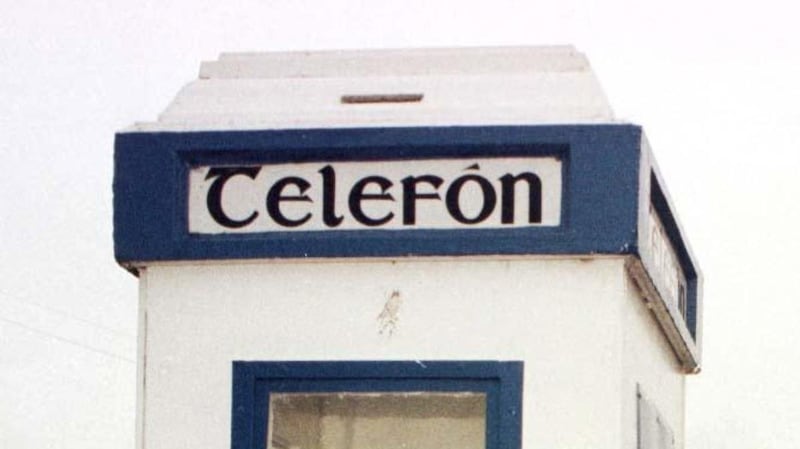A century-old ‘spelling mistake’ has been corrected on more than 20 new phone boxes which have popped up across Dublin in recent weeks.
The modern Irish-language spelling of telephone has now replaced the more familiar phonetic one found on the once-ubiquitous green and white boxes, the first of which appeared on Dublin’s Dawson Street weeks after the foundation of the State.
The telefón of times past is out and in comes teileafón. An Eir spokeswoman said the change was made following consultation with Foras na Gaeilge, the body responsible for the promotion of the Irish language.
But she denied the company in all its incarnations of the last 100 years had got it wrong. “Telefón would have been the phonetic Gaelicisation of the English word telephone when telephones were first introduced in Ireland,” she said. “And it would be a spelling that would still be used colloquially. Irish is an evolving language and teileafón is now the official spelling.”

The new spelling is being carried on “digital kiosks” owned and operated by Eir’s partner Clear Channel.
But while the spelling may have changed to reflect modern times, it is unlikely to do anything to arrest the apparently inevitable slide of the phone box into oblivion.
All told there are now just 403 payphones located at 268 sites nationwide, with most found in locations such as train stations and airports.
In 2008 there were close to 4,000 payphones around the country but their use collapsed with the proliferation of mobile phones over recent decades. There are now some counties, including Leitrim, Roscommon, Donegal and Mayo, without any public payphones.
Little more than a decade ago, more than a million calls were made from payphones each year, compared with fewer than 100,000 over the last 12 months – an average of about 250 calls each day from the whole network.
Upgrades
The Eir spokeswoman said the company was in the process of upgrading its phone boxes and “looking at ways in which our infrastructure can better serve the community”.
She said the company was “working with county councils to agree on the best use of legacy infrastructure. In Dublin city, for example, we have installed 22 digital kiosks”.
“The new digital kiosks are designed to play a role that is more suitable to city life today, not only as a point of connectivity, but as an information system for the local authorities services, including mapping systems for visitors and residents when life returns to normal.”
The spokeswoman said the kiosks would be placed where the old public phone boxes were positioned and “would have a smaller footprint, taking up less space on the pavement”.
The company is also rolling out another infrastructure upgrade programme, to replace payphone kiosks with rapid electric-vehicle charging points, at no cost to councils, with 180 telephone kiosks initially targeted nationwide.











